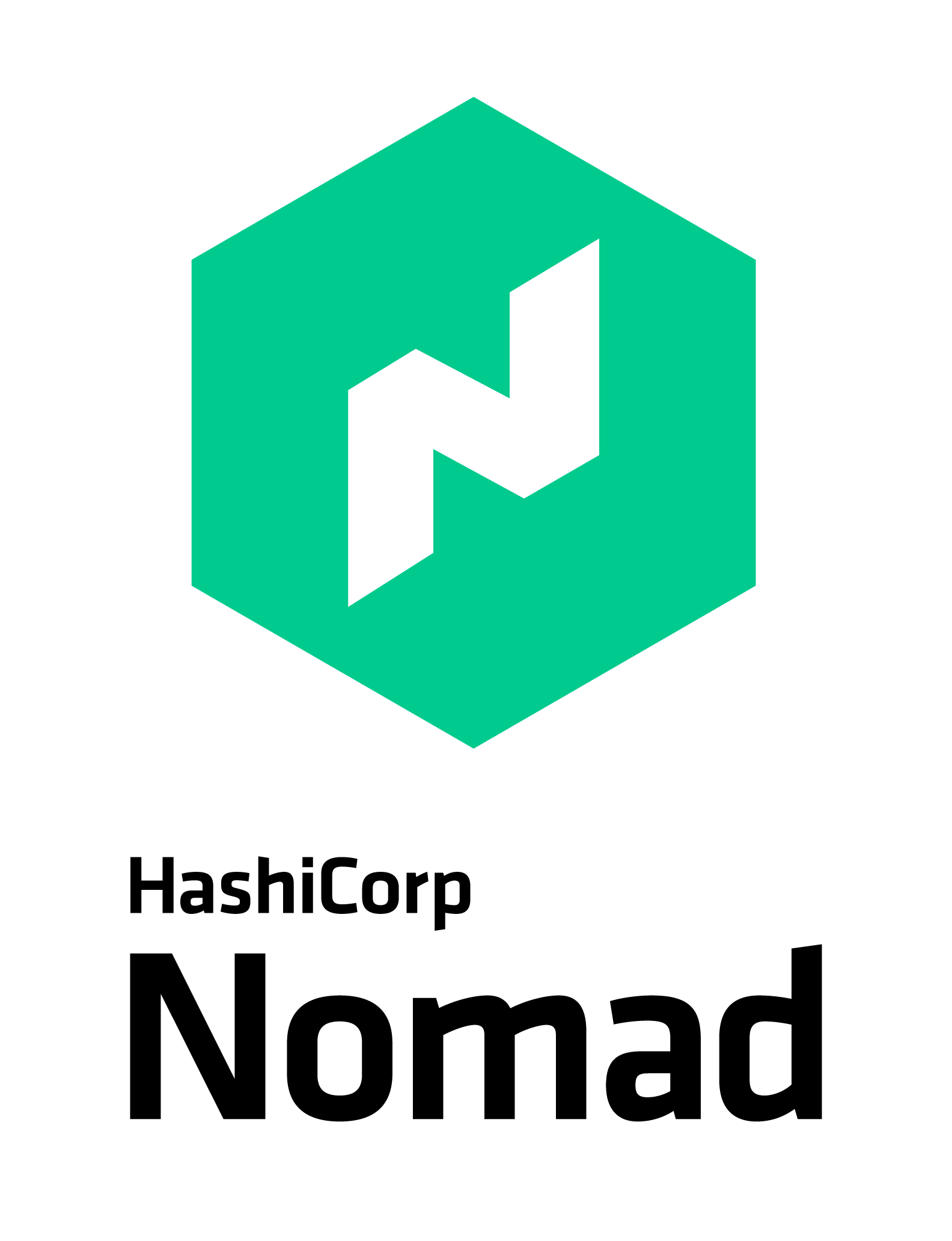
ABOUT BEN’S SESSION:
Cloud Engineering Track | Momentum Ballroom D
October 15, 2024 | 4:15 PM ET – 4:45 PM ET
Session detail: Kubernetes is a trendy solution, but in most cases, there is a skills gap when deploying and maintaining Kubernetes. I am looking at Nomad to bridge the gap and provide a simpler solution to run self-hosted platform infrastructure such as runners for CI/CD pipelines, Packer workflows to build image, send build metadata to HCP Packer, and lastly running HCP Terraform Agents.
Hashi Areas / technologies covered: Terraform, Nomad, HashiCorp Cloud Platform, Packer, Infrastructure Lifecycle Management
Scaling Simplified: How Nomad Bridges the Kubernetes Skills Gap
When it comes to orchestration, Kubernetes is often the go-to choice. Its popularity is undeniable, but many engineering teams quickly find themselves grappling with its complexity. Kubernetes’ steep learning curve and operational challenges have left many asking a crucial question: is there an easier way to scale infrastructure without compromising capability? The answer may lie in Nomad, a lightweight yet powerful alternative that’s steadily gaining traction for its simplicity and efficiency.
If you’ve ever found yourself struggling with the intricacies of Kubernetes or simply looking for a more straightforward solution to scale your infrastructure, then this upcoming session at HashiConf 2024 hosted by River Point Technology’s very own Ben Lykins, is for you. Titled “A Beginner’s Journey: Scaling Self-Hosted Platform Infrastructure with Nomad”, Ben’s session aims to provide the audience with actionable insights on how you can leverage Nomad to overcome the challenges often associated with Kubernetes.
Why Nomad? Understanding the Challenges with Kubernetes
Kubernetes is widely praised for its ability to manage containerized applications at scale, but the truth is, it often requires a significant amount of expertise to run efficiently. The inherent complexity can lead to several challenges, including:

- Steep Learning Curve: Kubernetes has a vast ecosystem that includes various moving parts such as Pods, Deployments, Services, Ingress, and more. For newcomers, this can be overwhelming and time-consuming to learn.
- Resource Intensity: Running Kubernetes clusters can be resource-heavy, particularly in smaller or self-hosted environments where cost and simplicity are critical.
- Operational Complexity: Maintaining and updating Kubernetes clusters involves careful planning and a deep understanding of how the different components interact with each other.
While Kubernetes is an excellent solution for many organizations, its complexity can lead to operational bottlenecks. This is where Nomad shines as an alternative—providing a simpler, more flexible platform for managing workloads.
What is Nomad?
HashiCorp Nomad is a flexible workload orchestrator that’s designed to run containers, VMs, and other application types on any infrastructure. Unlike Kubernetes, Nomad is lightweight and easy to adopt, yet powerful enough to handle production-grade workloads.
Here are a few key reasons why Nomad stands out as a strong contender for self-hosted platform infrastructure:

- Simplicity: Nomad’s core is lightweight, making it easier to install and manage than Kubernetes.
- Flexibility: While Kubernetes is designed specifically for containers, Nomad can orchestrate a variety of workloads, including containers, VMs, and batch jobs.
- Scalability: Nomad scales horizontally and can handle thousands of nodes without compromising performance.
- Integration with HashiCorp Tools: Nomad works seamlessly with other HashiCorp products such as Terraform, Consul, and Vault, creating an ecosystem that’s perfect for managing infrastructure as code (IaC).
How Nomad Bridges the Skills Gap
In this session, we’ll explore how Nomad addresses many of the pain points experienced by those who struggle with Kubernetes. Whether you’re new to infrastructure management or simply looking for a more efficient way to run self-hosted platforms, Nomad provides a simpler, more approachable solution. Here’s how:
1. Simple Configuration Language
Nomad’s use of HCL (HashiCorp Configuration Language) makes it incredibly simple to define and manage infrastructure. HCL’s human-readable syntax allows users to quickly and clearly define job specifications, configurations, and policies.
With Nomad, HCL streamlines workflows by offering a declarative approach, making it easy for both beginners and seasoned engineers to understand and use. This simplicity reduces the learning curve and enhances productivity, especially when working with HashiCorp’s broader ecosystem like Terraform and Vault.
2. Single Binary
Nomad’s architecture as a single binary makes it remarkably simple to deploy and manage. With no external dependencies or complex setup, Nomad can be easily installed and run on any environment, from local development to large-scale production. This single binary handles all core functions—scheduling, orchestration, and resource management—without needing multiple components or services.
Its simplicity reduces operational overhead, speeds up installation, and enables quick portability between on-premises and cloud environments, making Nomad an efficient and user-friendly solution for managing workloads at any scale.
3. Fit in HashiCorp’s Ecosystem
Nomad’s seamless integrations with other HashiCorp products, like Vault, Consul, and Terraform, make it a powerful part of a unified infrastructure ecosystem. With these integrations, Nomad enhances security, networking, and provisioning workflows. Vault provides dynamic secrets management, ensuring sensitive data remains secure, while Consul offers service discovery and networking automation. Terraform simplifies infrastructure provisioning, allowing teams to define and deploy infrastructure as well as Nomad con. These integrations streamline operations, increase efficiency, and create a cohesive, end-to-end solution for managing complex infrastructure environments.
Nomad vs. Kubernetes: Is It Time to Make the Switch?
While Kubernetes has long been the gold standard for container orchestration, it’s not without its downsides—especially for teams looking for a more straightforward way to manage their platform infrastructure. Nomad’s lightweight architecture and simplicity make it an excellent alternative for those who want to minimize complexity while still scaling effectively.
In this session, you’ll learn whether Nomad is the right fit for your organization and how you can start using it to build scalable, self-hosted platforms.
Conclusion: Bridging the Gap with Nomad

Kubernetes will likely remain a dominant force in the infrastructure space, but for those looking for an alternative that offers ease of use without sacrificing scalability, Nomad is a strong contender. With its ability to run various workloads, integrate with HashiCorp’s suite of tools, and scale efficiently, Nomad provides a simpler solution to managing self-hosted platform infrastructure.
If you’re ready to take your infrastructure to the next level while reducing operational complexity, be sure to attend “A Beginner’s Journey: Scaling Self-Hosted Platform Infrastructure with Nomad” at HashiConf 2024. Whether you’re new to Nomad or just looking for a more streamlined solution, this session will equip you with the knowledge and tools to make scaling your infrastructure more manageable.
Why Attend This Session at HashiConf 2024?
Here are just a few reasons why you shouldn’t miss Ben’s session “A Beginner’s Journey: Scaling Self-Hosted Platform Infrastructure with Nomad” at HashiConf 2024:
- Actionable Insights: Learn how to practically implement Nomad to simplify your platform infrastructure, with real-world examples and best practices.
- Hands-On Learning: Understand how to integrate Nomad with tools you’re already using, such as Terraform, Packer, and HCP, and see how it all fits together in a cohesive workflow.
- Community Engagement: Connect with other engineers and developers who are tackling similar challenges, and share experiences on simplifying infrastructure management.
- Expert Guidance: Whether you’re new to Nomad or already familiar with HashiCorp tools, this session offers valuable insights on how to scale your infrastructure in a way that’s approachable and efficient.
Who Should Attend?
This session is designed for both beginners and experienced practitioners who are looking for alternatives to Kubernetes or simply want to learn more about the capabilities of Nomad. Whether you’re part of an engineering team responsible for CI/CD pipelines, a platform engineer managing infrastructure deployments, or a cloud architect looking for a simpler way to orchestrate workloads, this session will offer valuable insights and practical guidance. Need help with Nomad or any of the HashiCorp suite of products? Contact RPT today, as the leading HashiCorp experts, we can help.
###
PANEL DATE & TIME:
Date: October 15, 2024
Time: 4:15 PM – 4:45 PM ET
Location: Momentum Ballroom D, HashiConf 2024, Boston
Award-Winning Cloud Consulting, Training & Enablement Provider Lures Industry Leaders
Pittsburgh, PA – April 16, 2024 (Newswire) – River Point Technology (RPT), an award-winning cloud consulting, training, and enablement provider, today formally announced the addition of two industry leaders to its management team to support continued high growth. RPT has named Dane Smith, Managing Director of Global Client Engagement, and Steve Pantol, VP Service Delivery, bringing their years of experience to bolster an existing high-end team.
Welcome Dane Smith, Managing Director of Global Client Engagement
Dane Smith brings over thirty years of experience building and leading sales organizations from Sun Microsystems to VMware. He has achieved success in the startup world where he has been a founding member, board advisor, and investor and had the good fortune to be a part of multiple exits. Most recently Dane helped lead computer science and data science innovation, entrepreneurship, and startups at the University of Chicago’s Polsky Center. Dane’s comprehensive experience will bring a strong focus to RPT in growing the intellectual property portfolio and RPT’s value proposition to its global F1000 customers and partners.
Welcome Steve Pantol, VP Service Delivery
Steve Pantol joins RPT as a leader with a track record of building and scaling services organizations. Steve led the development of the Cloud Services team at a large solutions integrator and more recently supported scaling the cloud native consulting group at VMware that became VMware Tanzu Labs following VMware’s acquisition of Pivotal. The successes of executing on these high growth roles will bring critical experience to RPT to support our clients’ needs as they progress through their digital transformation journeys.
Jeff Eiben, CEO of RPT, stated, “I couldn’t be more excited to bring the level of talent that Dane and Steve possess to RPT. Their industry knowledge will bring immediate value to our clients, partners, and team. My main criteria in adding executive talent to RPT was for leaders that have had a demonstrated record of accomplishment and can hit the ground running in support of our company goals. With these additions to our high-end team, strong intellectual capital and a F1000 client base of household names, we can continue to be laser focused on successful customer outcomes.”
River Point Technology’s award-winning team, comprised of some of the world’s best IT, cloud, and DevOps experts, delivers a comprehensive suite of consulting offerings, including:
- Cloud management: Optimization of cloud resources for cost efficiencies & operational excellence.
- Application modernization: State-of-the-art solutions help you develop faster & better.
- Digital transformation: Our experts guide you on the journey & give you the competitive edge.
- Agile DevOps: Our robust DevOps practices result in faster dev cycles & enhanced software quality.
- Continuous Improvement & Delivery (CI/CD): We help drive operational efficiency to optimal return on tech investment.
Through its 5-star rated training programs on leading cloud platforms, RPT equips teams with the necessary skills to excel in the cloud. Additionally, the company’s flagship offering, the RPT Accelerator, is a subscription-based enablement program that helps enterprises achieve Day 2 success in the cloud, ensuring ongoing optimization and value realization.
With its unparalleled expertise and dedication to customer success, RPT is poised to continue leading the way in cloud consulting and enablement. By empowering organizations to leverage the cloud effectively, RPT helps them achieve their full potential and accelerate their digital transformation journeys.
About River Point Technology: River Point Technology (RPT) is an award-winning cloud consulting, training, and enablement provider, partnering with the Fortune 500 to accelerate their digital transformation and infrastructure automation journeys and redefine the art of the possible. Our world-class team of IT, cloud, and DevOps experts helps organizations leverage the cloud for transformative growth through prescriptive methodologies, best- in-class services, and our trademarked Value Creation Technology process. From consulting and training to comprehensive year-long RPT Accelerator programs, River Point Technology empowers enterprises to achieve Day 2 success in the cloud and maximize their technology investments.
No matter what industry you’re in, cyberattacks and data breaches are a daily threat. That’s why it’s so vital for DevOps and DevSecOps teams to protect sensitive data and secure access to business-critical resources. As far too many a corporate victim has learned, traditional security methods often aren’t enough. They leave organizations vulnerable to breaches, hinder agility, and place unnecessary burdens on IT teams.
This is where the power of using HashiCorp’s Vault and Boundary in concert with each other emerges, providing a sophisticated security and access management solution that goes beyond cost savings. Together, they enable organizations to greatly improve security, efficiency, and enhance the user experience. However, seamlessly integrating these two powerful tools requires careful planning and consideration. That’s why we’ve pulled together some expert tips to assist with the journey.
When integrating HashiCorp Vault and Boundary, we suggest you keep in mind these crucial aspects to ensure a smooth and successful implementation.

- Understanding the Individual Roles: Understanding the distinct functions of Vault and Boundary is fundamental for effective integration.
- Planning and Design: Defining clear goals, user roles, and access controls is vital for a secure and efficient configuration.
- Authentication and Authorization: Determining the appropriate methods for user authentication and authorization ensures secure access to resources.
- Secrets Management: Establishing robust secret lifecycle management practices is crucial for protecting sensitive information.
- Session Management: Configuring secure session management settings is essential for controlling access duration and privileges.
- Monitoring and Auditing: Implementing comprehensive monitoring and auditing capabilities aids in maintaining visibility and responding to potential threats.
- Best Practices and Tips: Exploring additional recommendations for optimizing the integration and ensuring long-term success.
1. Understanding the Individual Roles

Vault: Provides organizations with identity-based security to automatically authenticate and authorize access to secrets and other sensitive data. It offers a centralized platform for storing, managing, and accessing secrets like passwords, API keys, and certificates. Vault enforces access control through granular policies, ensuring users only have the specific permissions they need for their tasks.
Boundary: Think of Boundary as a vigilant gatekeeper, meticulously controlling access to resources based on pre-defined policies and user identities. It acts as a session management layer, facilitating secure connections between users and target resources like databases, applications, and servers. Boundary leverages Vault for dynamic credential generation and access control enforcement, ensuring users only possess the necessary credentials for the duration of their session. Built for cloud-native environments, modern privileged access management from HashiCorp Boundary uses identity-driven controls to secure user access across dynamic environments.
By understanding these distinct roles, we can begin to visualize how these two tools can work together to create a secure and efficient access management solution.
2. Planning and Design
Before starting the integration journey, planning and design is key. Here are key aspects to consider:

- Define Clear Goals: Identify your specific security objectives for tailoring the integration. Is your primary focus on minimizing the attack surface, simplifying compliance, or streamlining access control workflows?
- Identify User Roles and Access Needs: Clearly define different user roles within your organization and the specific access permissions they require to perform their tasks. This will form the foundation for creating granular Vault policies and Boundary access controls.
- Network Segmentation: Evaluate your network architecture and consider implementing segmentation strategies to further isolate critical resources and restrict access.
3. Authentication and Authorization
With a clear understanding of user roles and access needs, you can configure secure authentication and authorization mechanisms. Key elements to consider:

- Authentication Methods: Choose appropriate authentication methods for users, such as LDAP or Active Directory integration, multi-factor authentication (MFA), or certificate-based authentication.
- Vault Authentication: Configure Vault to authenticate users based on the chosen method and integrate it with your existing authentication infrastructure.
- Authorization with Vault Policies: Define granular Vault policies that specify which users and groups have access to specific secrets and the permissions they possess (read, write, etc.).
- Boundary Access Control: Leverage Vault’s policies within Boundary to enforce access control at the session level. Users will only have access to designated resources based on their Vault permissions and the duration of their granted session.
4. Secrets Management
Securely managing secrets is critical for protecting sensitive information and preventing unauthorized access. Key considerations for integrating Vault and Boundary:

- Secret Storage Options: Vault offers various secret management solutions, including key-value pairs, credential stores, and integrations with popular cloud platforms and third-party tools. Choose the appropriate integration type based on your specific secrets and their use cases.
- Secret Lifecycle Management: Establish robust practices for managing the lifecycle of secrets, including generation, rotation, and revocation. Automate these processes whenever possible to minimize manual errors and ensure timely updates.
- Dynamic Credentials: Leverage Vault’s dynamic credential generation capabilities to create short-lived, unique credentials for each user session. This significantly reduces the risk associated with static credentials, further enhancing security.
- Boundary Credential Injection: Configure Boundary to securely inject dynamically generated credentials into user sessions, eliminating the need for users to manage them directly.
5. Session Management
Controlling user sessions is crucial for maintaining a secure environment. When integrating Vault and Boundary, keep these things in mind:

- Session Timeouts: Configure session timeouts in Boundary to automatically terminate user sessions after a predetermined period of inactivity. This minimizes the potential damage if a user’s session is compromised.
- Idle Timeouts: Implement additional idle timeouts within the session that automatically lock or terminate the session after a period of inactivity, further enhancing security.
- Session Recording (Optional): Consider enabling session recording in Boundary for audit purposes. This can provide valuable insights into user activity and facilitate incident investigations.
6. Monitoring and Auditing
Implementing comprehensive monitoring and auditing capabilities is essential for maintaining visibility into user activity and identifying potential threats. When Boundary and Vault work together, these things are to be considered:

- Monitor Vault and Boundary Logs: Monitor logs generated by both Vault and Boundary to identify suspicious activity, failed login attempts, and access control violations.
- Centralized Logging: Consider integrating Vault and Boundary logs with a centralized logging platform for streamlined analysis and visualization.
- Alerting: Configure alerts to be triggered based on specific events within Vault and Boundary logs, notifying security teams of potential security incidents.
7. Best Practices and Tips

When integrating Vault and Boundary there are many elements that need to be considered and prioritized for the journey. HashiCorp Terraform can be used for efficient configuration management and infrastructure deployment. Consider configuring Vault and Boundary for high availability to ensure resilience and minimize downtime.
To get the most out of your investment with custom tips and strategy, reach out to RPT. We provide a tailored 360-degree approach that addresses your specific environment and requirements. Once our team of experts meticulously analyzes all pertinent information and carefully considers every relevant aspect, we are ready to craft exciting and innovative solutions tailored to your unique needs and circumstances.
Summary
By following these essential considerations and best practices you can successfully integrate HashiCorp Vault and Boundary to better protect your organization against external and internal threats. The result can be a more secure and efficient access management ecosystem that empowers your organization to thrive in the ever-changing digital landscape. Remember, security is a continuous journey, not a destination. As technology evolves, so do the techniques used by hackers and cybercriminals. That’s why it’s imperative for DevOps and DevSecOps teams to regularly review and update their organization’s security practices to stay ahead of the threat landscape.
For more tips on how to maximize your investment in Vault and Boundary, read this.
Need help maximizing the benefits of using Vault & Boundary? Contact the experts at RPT. As HashiCorp’s 2023 Global Competency of the Year and the only HashiCorp partner with all 3 certifications (Security, Infrastructure, & Networking), you know you’re working the leading HashiCorp services partner. Contact [email protected] today.
About River Point Technology
River Point Technology (RPT) is an award-winning cloud and DevOps service provider that helps Fortune 500 companies accelerate digital transformation and redefine what is possible. Our passionate team of engineers and architects simplify the deployment, integration, and management of emerging technology by delivering state-of-the-art custom solutions. We further position organizations to experience Day 2 success at scale and realize the value of their technology investments by offering best-in-class enablement opportunities. These include the subscription-based RPT Resident Accelerator program that’s designed to help enterprises manage the day-to-day operations of an advanced tech stack, the just-launched RPT Connect App, and our expert-led training classes. Founded in 2011, our unique approach to evaluating and adopting emerging technology is based on our proprietary and proven Value Creation Technology process that empowers IT teams to boldly take strategic risks that result in measurable business impact. What’s your vision? Contact River Point Technology today and see what’s possible.